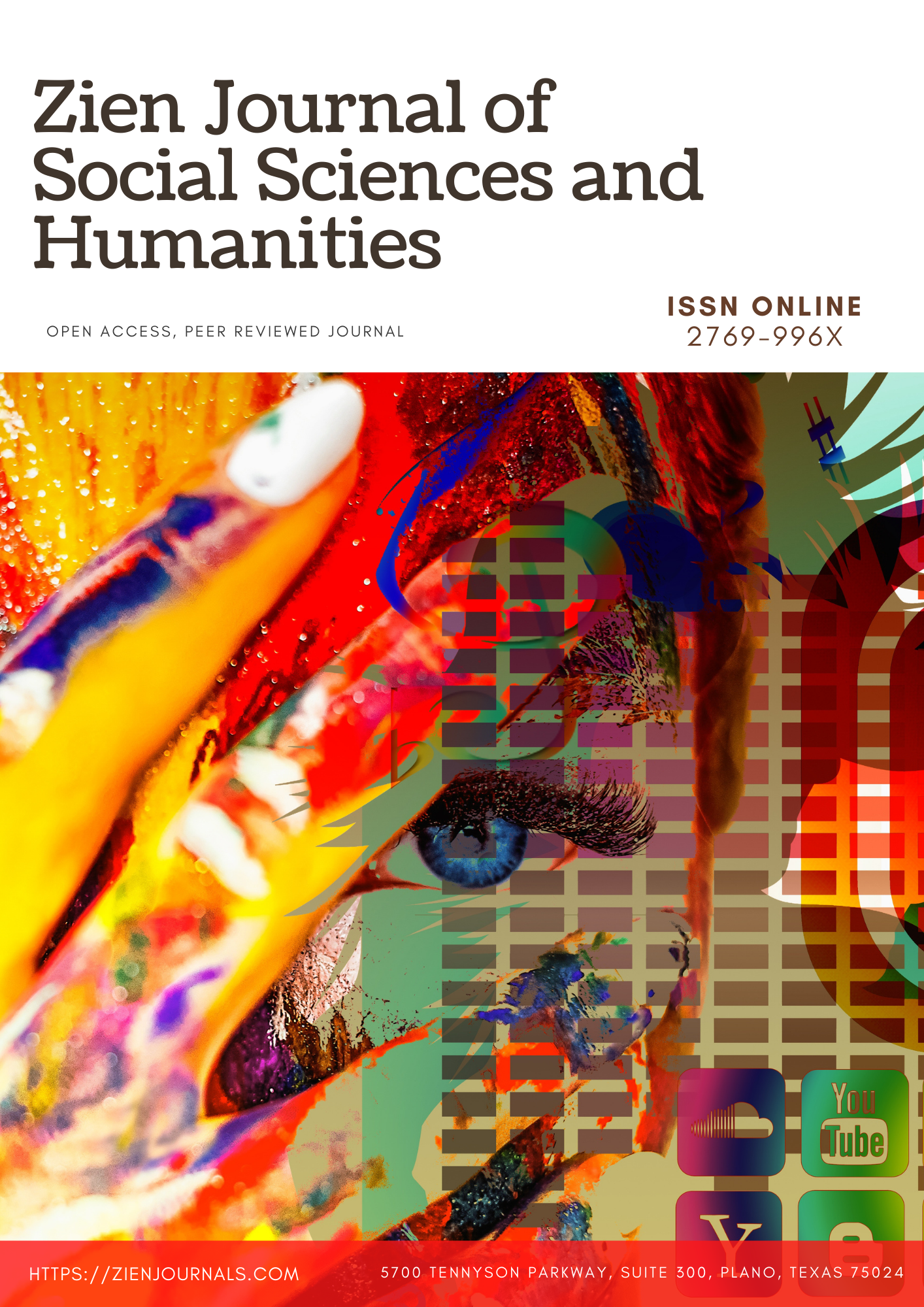##plugins.themes.academic_pro.article.main##
Abstract
A comparative analysis of Morphometry and Morphology of the watershed was examined with the aid of GIS and fieldwork respectively. The catchment is mostly covered by dwindling rainforest vegetation due to intensive anthropogenic activities such as urbanization, farming, sand mining, dredging etc. The study entailed an evaluation of streamflow characteristic of the basin by the delineation of the watershed and determination of morphometric parameters such as the linear, aerial and relief aspects. The focus on Drainage Density (Dd), Stream Frequency (Fs), Bifurcation Ratio (Rb), Stream Order (Nu), Stream Length (Lu), Texture Ratio (T), Elongation Ratio (Re), Circulatory Ratio (Rc), Form Factor (Rf) etc. The result showed that the drainage network is dendritic type, indicating textural homogeneity and requiring less structural controls as well as variation in bifurcation ratio from 2.00 to 5.50. Elongation ratio of 7.00 depicts a basin of elongated shaped category. The stream order ranges from first to sixth order basin. The basin was found to possess low drainage density, drainage texture and stream frequency which indicates highly permeable soils and low relief. Other investigated parameters include low overland flow revealed recharge related measures, surface water augmentation measures that can be undertaken for water resource management as well as soil conservation structures in the study area. Furthermore, the results of fieldwork analyses using the regression and correlation analysis showed that there is a high positive correlation between channel morphology and discharge as well as urbanization index, infiltration capacity showed a negative relationship with channel morphology, but a positive correlation with discharge which is the potent factor that determines channel morphology. Furthermore, sediment yield had a relatively low correlation coefficient that is not statistically significant with channel morphology. Consequently, it can be concluded that urbanization and discharge are the most significant factors that determine the present channel shape and size characteristics of Otamiri river channel.
Keywords
##plugins.themes.academic_pro.article.details##

This work is licensed under a Creative Commons Attribution-NonCommercial 4.0 International License.
References
- Akintola, J. O. (1979).The Parameters of Infiltration Equations on Urban Surfaces. Ph.D Thesis, University of Ibadan, Ibadan.
- Barr, D., Wilket, C. (2017). Urbanization, geomorphology, policy, and design ,, Electronic Thesis and Dissertation Repository.4578
- Clark, J.J., and Wilcock, P.R. (2000). Effects of land use change on channel morphology in north- eastern Puerto Rico . Bulletin of Geological Society of America, 112 (12):1763-1777.
- Crutzen, P. (2002). Geology of mankind. Nature 415:23.
- Gregory, K. J. and Walling, D. E. (1973).The measurement of the effects of building construction on drainage basin dynamics, Journal of Hydrology, 129-144.
- Goudie A.S and Viles H.A (1997), Salt Weathering Hazards, Wiley.
- Horton, R. E. (1945). Erosional development of streams and the drainage basins: hydrophysical approach to quantitative morphology,Bulletin of Geological Society of America, 56, 275-370.
- Jatan D, Istak A and Nibedita D. (2015). Impact of anthropogenic activities on channel characteristics: A case study of Muhuri River, Tripura, North-East India. Archives of Applied Science Research, 7 (7): 27-36.
- Kates, R. (1962): Hazards and choice perception in flood plain management. Department of geography, University of Chikago, Research Paper. 13(5)
- King, C.A.M. 91966). Techniques in Geomorphology. Arnold, London.
- Knighton, C. (1979): Urbanization and natural stream channel. Annals Ass. Amer. Geography 67 (30, 323-342
- Knighton, D. (1984). Fluvial Forms and processes. Arnold, 184-198.
- Gregory, K. J. and Walling, D. E. (1973).The measurement of the effects of building construction on drainage basin dynamics, Journal of Hydrology, 129-144.
- Gregory. K. J. (2006). The human role in changing river channels. Geomorphology 79 (172–191)
- Hammer, S. J. (1973): stream channel enlarhement due to urbanization. Water Resources Research (8)1530-1537.
- Harsha1, J., Ravikumar, A.S, Shivakumar, B.L (2020). Evaluation of morphometric parameters and hypsometric curve of Arkavathy river basin using RS and GIS techniques. Applied Water Science.10:86.
- Latrubesse, E. M. and Park, E. (2017). Rivers and streams, The International Encyclopaedia of Geography
- McCann, C. J. (2013). Urbanization and its Effects on Channel Morphology. The University of Texas.
- Niezgoda, S. L and Johnson, P. O. (2004). Improving the urban stream restoration effort. Identifying critical form and processes relationships. Environmental management.
- Schumm, S. A. (1977). The Fluvial System. N. Y. U. S.A.; J. W. and Sons Inc.
- Steffen, W., Crutzen, P.J., McNeill, J.R. (2007). The Anthropocene: are Humans Now Overwhelming the Great Forces of Nature. Ambio 36:614–621.
- Strahler, A. N. and Strahler, A. H. (1973). Environmental Geoscience: Interaction Between Natural Systems and Man, N.Y. U. S. A.: J. W. and Sons Ltd.
- Thornbury, W.D. (1979). Principles of Geomorphology (2nd edition), John Willey, New York, 20.
- Odemerho, F. O. (1985). The effects of shifting cultivation on stream channel size and hydraulic geometry in small headwater basins of South-Western Nigeria. GeografiskaAnnaler, 66A , 327-340.
- Oku, H. B. (1997).Determinants of Channel Morphology in Urbanizing River Catchment.M.Sc Thesis, University of Port Harcourt.
- Oyegun, C.U. (1984).Predicting Channel Morphology from Sediment Yield, Discharge and Urbanization.M.Sc Thesis, University of Ibadan.
- Oyegun, C. U. (1993). Land degradation and the coastal environment of Nigeria. Catena, 20,215-225.
- Petersen, J.M, Sack, D., Gabler, R.E (2017). Physical geography. CENGAGE Learning, Boston.
- Singh, P., Krishna, J. T. & Singh, U.C (2013). Morphometric analysis of Morar River Basin, Madhya Pradesh, India, using remote sensing and GIS techniques. Environ Earth Sci. 68:1967-1977.
- Waikar M.L, Nilawar, A.P (2014). Morphometric analysis of a drainage basin using geographical information system: a case study. Int. J. Multidiscip. Curr Res. 2:179–184
